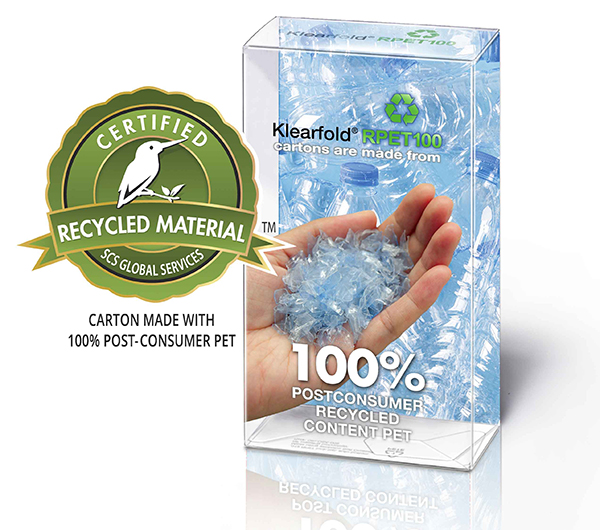Trusting Recycled Content Products

Recycling has long been recognized as one of the central pillars of the circular economy, and the third-leg of the Reduce-Reduce-Recycle mantra. Recycling is key to preserving natural resources, as well as preventing the build-up of waste streams that end up heaped in landfills, strewn by the side of the road, or littering our waterways and oceans. In many cases, converting discarded products and materials into useful products also saves energy, water, and has other benefits from a life-cycle standpoint.
Only a few decades ago, products containing recycled materials were the exception rather than rule. Today, given the rise in global commitments to sustainable development, and the pace of technological innovation, recycled products and materials have emerged from the sidelines to become a major market segment, reinforcing brand value and providing brand differentiation. Recycled products and materials include hard plastics used for packaging, toys, bags and electronic parts, plastic PET bottles converted into a range of apparel items, metals for everything from electronics to jewelry, and a wide range of recycled materials used to advance green building and furnishings.
Yet the business of turning post-consumer and pre-consumer waste streams into usable materials, much less a profit, remains an arduous one. Technical and implementation challenges abound, particularly in the separation of post-consumer recyclables, from food packaging to electronics. These challenges are further complicated by market gyrations, government regulations, and even shifting geopolitical headwinds. For instance, the January 2018 decision by China to refuse further shipments of recycled material from the United States interrupted supply chains, created market uncertainty, and altered recycled material value overnight (https://e360.yale.edu/features/piling-up-how-chinas-ban-on-importing-waste-has-stalled-global-recycling). Companies who are committed to circular economy principles, incorporating recycled materials into their products and packaging and planning for material retrieval and reuse at the end-of-product-life stage, must learn to navigate in this complex environment.
Defining Recycled Content
At its most basic, recycling –the diversion of used products and materials from waste streams toward further uses – has been a staple of life for thousands of years. However, from a modern business standpoint, the picture is far more nuanced. Process by process, industry by industry, it is important to distinguish post-consumer and pre-consumer recycled material from one another, as well as from industrial scrap. These definitional distinctions are partly physical, and partly value-driven, and can change over time.
Generally speaking, post-consumer material is derived from a product or package that is being discarded at the end of its useful life. This is the easiest recycled material category to identify, but often the hardest to collect and reprocess. Pre-consumer recycled material is waste from a manufacturing process that requires some level of reprocessing in order to be reused in either the same manufacturing process (“closed-loop”) or a different manufacturing process (“open-loop”).
Pre-consumer recycled material is differentiated from industrial scrap, which is generally clean material that can be easily fed back into the same or a similar process, and that would never have been destined for landfill or incineration in the first place. The international standard, ISO 14021, provides more precise definitions for these terms. Government agencies such as the US Federal Trade Commission provide additional details and examples to enforce uniform application of such claims.
Driving Demand
In addition to international standards bodies and government bodies, large retail chains and brands have gotten into the act. For instance, Target, Walmart and other retailers are driving demand for recycled products through their supply chains to meet internal sustainability objectives and goals for recycled content in the products sold in their stores. An example is the aggressive 100% recycled polyester goal Target has set for its clothing lines. Major electronics companies, including leading household brands heavily dependent upon Asian supply chain markets, are also responsible for the uptick in demand for recycled materials, requiring recycled metal alloys in many of the parts they use.
Packaging suppliers are increasingly being asked to incorporate recycled materials. The Sustainable Packaging Coalition, an international membership-based collaborative, has been working for years to creating packaging that meets customer sustainability specifications, including recycled content. Its “Design For Recycled Content Guide” is described as “the definitive guide for scaling up use of recycled content in packaging.”
Well-known packaging firm, Hip Lik Packaging, headquartered in Hong Kong with US and European HLP Klearfold subsidiaries, is one example. Its Klearfold® RPET100 plastic folding cartons are made with 100% post-consumer polyethylene terapthalate PET, helping to close the loop and offering important life cycle advantage.
“Klearfold® RPET100 cartons provide clear sustainability benefits,” said Wayne Wong, Asia Marketing Manager for Hip Lik Packaging. “First, we are repurposing PET water and soda bottles that have completed their original purpose and would otherwise been sent to landfills. In addition, the production process requires fewer fossil fuel resources and less energy than would otherwise be needed, translating into fewer environmental emissions. Moreover, our increased consumption of post-consumer recycled material helps to drive the growth of the PET recycling infrastructure.
The recycled content of Klearfold® RPET100 cartons, manufactured in the Hip Lik Packaging manufacturing facility in Shenzhen, China, was independently certified by SCS Global Services (SCS), an internationally recognized third-party certification body and pioneer in the field of recycled content certification since 1989.

The Role of Certification
Certification standards for recycled content claims, backed by third-party certification, serves as a helpful tool in this complex arena, bridging communications and expectations between the product manufacturer, the product supply chain, business and government purchasers, and end consumers. Certification provides guidance to producers, and establishes the legitimacy of recycled content claims with appropriate documentation.
Nicole Munoz, SCS’ Vice President of Environmental Certification Services, explained, “The process of certifying recycled content is essentially a mass balance exercise – a verification of incoming recycled material against outgoing recycled product claims and amounts. Under our approach, product manufacturers are engaged in a five-step process.”
- The manufacturer applies for certification, and provides an initial assertion of recycled content materials and percentages.
- Next, SCS provides a detailed document request tailored to the manufacturer’s operations, detailing the documentation needed related to material sources and amounts, and the quantity of product being produced.
- The manufacturer then obtains affidavits or other documentary evidence from its supply chain sources of recycled content.
- SCS assesses risks in the supply chain, and audits suppliers or manufacturing facilities as needed. Both desk audits and on-site inspections are utilized.
- Certification decisions are based on a mass balance calculation, combined with an assessment of the manufacturer’s quality management system, addressing key areas such as chain-of-custody and traceability, material segregation, supplier qualification procedures, and non-conformance procedures.
Once certification is awarded, manufacturers receive a numbered certificate and a certification mark for use on product and in marketing materials, specifying the confirmed recycled content levels. SCS posts the certification information to its Green Products Guide for further authentication.
Conclusion
Finally, given the growing environmental challenges we face, including heightened pressures on finite resources and the increasing potential for supply chain disruptions, use of recycled materials represents a hedge against future uncertainties. Recycling has always been a creative enterprise, foundational in the sustainability movement. Companies who are actively pushing the envelope on the use of recycled materials will be among those who are best positioned to succeed in the dynamic world marketplace.
Originally published in Circular Economy Asia Magazine (15 Jun 2020 Edition)

